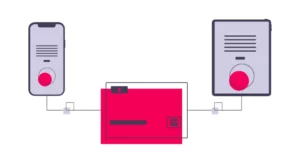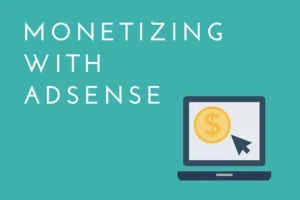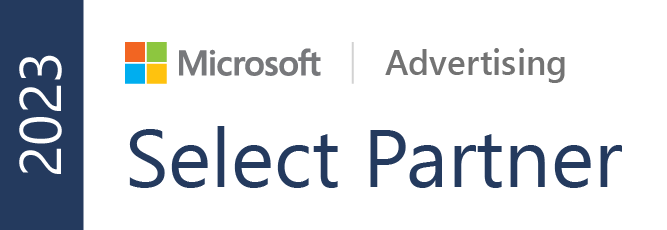For those who often read through blogs for increasing knowledge in various fields, you would most probably be familiar with the types of research, strategies and tutorials people use to convey the information. And you can see this especially in blogs that are purely based on technical information. So, you might be wondering to yourself, why read an article that talks about monetizing the business using nothing but banner ads? The answer is simple – it is one of the easiest ways to increase your revenue while also ensuring that the traffic to your website increases and remains high.
For people who are seriously looking to earn higher margins from their content, banner ads can indeed be a simple way out. Also known as display ads, programmatic ads, native ads, etc, you can commonly see them on multiple websites. Well, to be honest, sometimes they might seem to be annoying and distracting, but some time or the other you would have clicked on that ad, even if by mistake, and that action would have brought in money into the pocket of the blog owner.
We have seen large numbers of publishers and bloggers acquire almost 100% of their income from the advertisements they have hosted on their website each day. And we have seen numerous types and sorts of businesses doing it. Given below we have written down in detail what these websites have in common, what strategies work the best, and how you too can approach this sort of revenue system.
How Much Revenue Can You Earn From The Ads On Your Website?
It depends… on practically a large number of factors and circumstances. Be that as it may, if it so happens that you truly need to know whether the actual websites or digital publishers indeed generate 100% of their earnings from banner ads, the answer is, ‘Yes, they do. Not just one or two, but actually quite a few of them.’
If you can program an automated model correctly, it is surely, without doubt, one of the best ways and also the profitable one to approach web publishing. With the pressure of an enormous direct arrangement (groups of individuals selling and actualizing direct sponsor crusades) being now gone, distributors can concentrate a greater amount of their assets and time on more important things like content, SEO, social media, and other audience building segments that make publishing what it is today.
Continue reading to know the answer to how much a website can earn by hosting banner ads on their website.
What Amount Of Traffic Is Generally Required To Monetize A Website?
It relies upon the kind of traffic, the guest segment, the settings of your site content, and various other components that we have repeatedly mentioned above. It is true, every site is unique, however there are relatively few sites procuring enormous amounts of simple and automated ad money dollars with not even a few hundred thousand users visiting their website each month.
Most publishers usually try to find out what kind of traffic they are specializing in – this makes their work easier and helps them earn money faster. For instance, a web publisher may determine most of their traffic from Google Search or Facebook. These techniques, content, and methodologies for publishers that pull from Google Search analytics versus a Facebook one are in reality completely different from each other. Why so? Because the content people look for on Google is generally highly different from what they look up on Facebook. So, you need to use a combination of your common sense and the analytics software and gather all the data that can help you increase your earnings.
All this being said, both can be beneficial crowds for the publishers yet they call for distinctive publishing systems. We have featured a few models underneath of how you as a publisher can monetize a site.
How Can You Adapt Your Website For Various Kinds Of Traffic?
Guests coming from Google Search may act differently in contrast to guests coming from Facebook or an advertising newsletter. This plays an essential part in the way you should design your site’s pages, formats, route, and the other things on your website.
Seeing how these guests act may give you an excellent view of how to treat every client. As a whole, we need to see how to appropriately adapt a site utilizing the guest traffic. And the best way to do that is by noting down where the traffic came from, where did they go next, how much time they spent on which page and so on. You can do this using Google Analytics or using any other tracking website.
The objective ought to be to really make your user’s experience as good and easy as possible. The more they feel at ease while glancing through your website, the more time they spend there and thus your revenue and also their chances of clicking on the ad that you are showing on your website. This also includes getting the guest to remain on the site, drawn in with content, visiting numerous pages simultaneously.
The goal of each web distributor should be to improve advertisement earnings for a client experience session and not the page. Rather than attempting to sort out some way to augment the amount of CPMs on a page (the way numerous advertisement operations experts actually do it today), distributors ought to be centered around how they expand the estimated income from the whole visor session (all the pages visited on a client meeting).
Let’s Make It Easy For You To Understand How This Works
A client comes and views a huge load of promotions on a page, they are irritated and leave without visiting any other pages. That page may have acquired strong income (on account of the multitude of advertisements); in any case, the publisher may have missed out on the income that might have possibly been procured from all the promotions on extra pages that might have been seen had the user remained and visited those pages. That overall session revenue thus tends to be a lot more than a single page revenue and also far more valuable.
This is basically how distributors should be hoping to adapt their traffic with advertisements. They need to locate that ideal harmony between displaying ads and influencing user experiences — this is the way by which advertisement income is genuinely maximized.
The strategy that you should use to navigate the users coming in from Google and from Facebook or any other site for that matter needs to be different, as we have mentioned above. This treatment of the users also helps you maximize your revenue by influencing the users to click on the ads displayed on your website.
Advertisements can distract the user’s attention and cause them to visit less pages or even bounce from their session. By studying all your distinctive traffic sources and how the ads you display might be affecting them, you can optimise your site to make the users get the best out of every session.
You may locate that social clients bounce far less when you show 5-6 advertisements, contrasted with organic visitors. Seeing how every one of your traffic sources reacts to advertisements is basic to boosting your overall session revenue.
Testing Advertisements By Traffic Sources
The best way to guarantee that you’re really adjusting these factors properly is to test advertisement combinations (positions and density) by traffic source. This means testing various advertisements in various areas to various kinds of audience (Google Search versus Twitter, and so forth).
This will assist you with streamlining the advertisement income by traffic source. This can really add up actually quickly; as optimizing towards averages can have a truly negative impact on UX and income. For example, you may discover that the bounce rate on your site is moderately consistent when you are showing 5 advertisements or less. Nonetheless, if it so happens that you choose to simply show all guests 5 advertisements, you might be contrarily affecting one traffic source that doesn’t have similar likings. This would mean fundamentally less income from this traffic source.
So, what would be the best way to go about this? Test. Screen each traffic source, test advertisement arrangements, and density and see which ones perform the best for various traffic sources.
Adapting Various Sorts Of Content
Publishers with various core traffic sources typically have a ton of unique content too. A few websites are tool based (for example mini-computers, and so on), some feature trending topics and bite-sized content, and some might be evergreen material. These sorts of contents call for various kinds of strategies.
Probably the quickest approach to take a look at this in the conventional sense is by seeing content type as long or short.
Short Form Versus Long Form Content Monetization Tips
In the end, your main goal should be to screen how your content performs in various arrangements. This includes conveying it a few different ways, for example videos, gallery style, blog posts, single page format, and the other common and uncommon formats. You can use segments and filters in Google Analytics to decide how various kinds of clients react to things like content suggestion widgets or devices and other types of embedded content.
What Is The Main Goal Behind Doing All Of This?
Test different formats on different sets of audience. Analyse how each performs and gives every audience precisely what they need (you don’t need to optimize for averages).
What’s more, remember that the advertisements themselves are often the greatest variables. Guarantee that your advertisements are not negatively affecting UX on all of the different user segments that you have created.
Adapting these principles alone can lead you to earning 50 to 100% in ad revenue — perhaps even more. We see publishers often that are blown away by the type of change different ad combinations can have on different clients that are constantly visiting your website. You can also call this one of the significant foundations of having so many ads on certain blog pages.
What About Banner Ads? Should You Be Incorporating Them In Your Websites?
Now, we are certain that you are tired of hearing, ‘it depends’. Sadly, that is valid for pretty much every question you could have in this space. The best web publishers educate themselves about the special aspects of this space that are useful to their locales.
For those who are new, traditional advertisements are those advertisements that regularly sit before and after — or in the sidebar of substance — that act like sponsored content or content suggestions. There are normally specific networks that provide these sorts of promotions and generally incorporate connections to articles outside of the publisher’s site.
Not only do local advertisements have their own effect on client encounters — they affect the strength of different promotions also. Local promotions (native ads) quite often have some sort of impact on bounce rate, session duration, and pageviews per visit.
This data by itself is not good or bad. Web publishers should just show native ads in a relatable setting and not to everybody. These are a few general rules yet it’s essential for what we’ve realized. Native ads bode well for particular sorts of clients than others (social versus organic visitors being one of the most common examples).
Wrapping Up
Ads can be very distracting for the users who have come on to your page to gain knowledge. While on the other hand, the other group of people who have just ended up on your page casually might not be as irked by the ads. So, it is very important that you keep in mind which ads you are showing to which audience and how many, because in the end you want them to stay on your page and even click on those ads and not to shoo them away by throwing multiple ads on their faces, right? If you are providing a high quality product, only then can you benefit the most from it.







